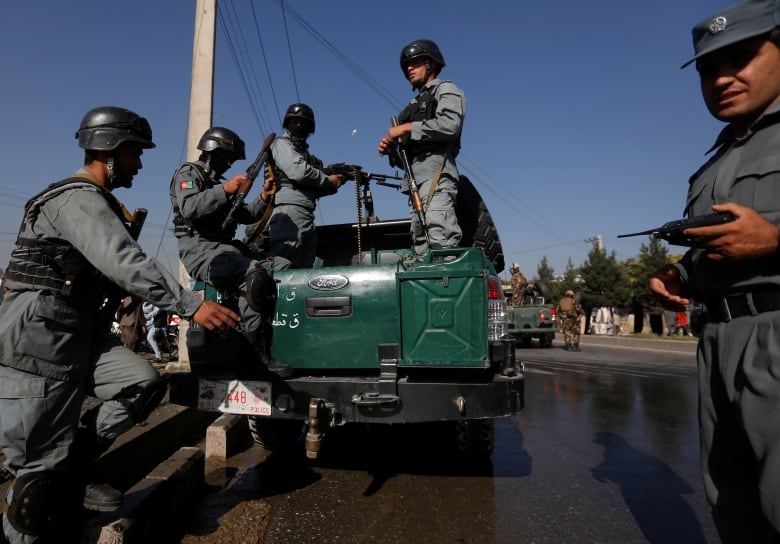After 15 years of war and billions in aid, Afghanistan remains a basket case: Don Murray
Kabul trip begins with deadly wake-up bombing

A trip to Kabul is a trip into the past, and also into a very uncertain future.
Not to put too fine a point on it, Afghanistan is a basket case. The capital reminded me of Baghdad when I was there in the worst days after the American-British invasion of 2003 — blast walls, and convoys in the streets led and tailed by jeeps stuffed with soldiers and machine guns.

I was in Afghanistan as part of a group following the UN high commissioner for refugees, Filippo Grandi. The morning after we arrived, we awoke at 5:50 a.m. to the sound of a huge explosion. A suicide bomber had boarded a bus taking Nepalese security guards to the Canadian Embassy. The toll: 14 dead and eight injured.

A few days later, another bomb killed 30 police cadets and four civilians. An enormous explosion in April killed 64 people and wounded almost 350 others. This was dubbed the start of the Taliban "spring offensive."
Refugee crisis
The wars in Afghanistan since the Soviet invasion in 1978 have created the largest protracted refugee crisis in the world. Millions of refugees — more than 10 million over the years — fled succeeding waves of violence. About six million — half officially, the rest unofficially — now live in neighbouring Pakistan and Iran. And inside Afghanistan there are the internally displaced, refugees in their own country, more than 1.2 million of them.
The violence rips through the country unabated.
The official UN figure identifies conflict in 31 of 34 Afghan provinces. And this after the United States has officially spent upwards of $650 billion fighting al-Qaeda and the Taliban since 2001, and donor countries have contributed another $150 billion in development aid. Much of it has disappeared, into pockets of ministers and regional bosses, into offshore accounts, and into artificially inflated contracts.
- Canada's mission in Afghanistan: Was it worth it?
- Out of Afghanistan — Canada's 12-year war
- Minister lashes out against Pakistan's 'state sponsorship of terrorism'
Ghaziabad is an arid village of mud-brick houses in the hills outside Kabul. Its population has more than doubled in the last year. The 6,000 new residents are from Nangarhar province, which borders on neighbouring Pakistan. They fled their villages in 2015 when terrorist fighters invaded their lands.
The invaders announced that the villagers' daughters were to be forcibly married to Islamist fighters. Some girls were as young as 11. Whole villages emptied, the families choosing flight rather than family dishonour.
"The fighting was bad, but that was too much. We could not stay and see our daughters taken," one village leader said.
Relatives and clan members have made room for the newcomers in Ghaziabad. But there is little work — one estimate says 40 per cent of the workforce in the country is unemployed — and little water.
"We need access to water, but above all we need peace, so we may go home," said Dr. Zahir Shah, the spokesman for the village elders.
A government minister, along with the UN refugee agency, promised money for 14 new wells.
Peace is another matter.
Safe havens for terrorists
It's hardly a secret that Taliban fighters and their leaders operate from safe havens inside Pakistan. So do other terrorist fighters. Afghan President Ashraf Ghani has publicly denounced this.

Afghan refugees in Pakistan are another source of pressure. There are 1.5 million legally registered (and another 1.5 million living there under the radar). The Pakistan government keeps them on a short leash. It waited until the last week of June to announce it was extending their right to stay past July 1 — and the reprieve only lasts six months.
Pakistan is now publicly pushing for Afghanistan to take many refugees back, even if that means putting them in camps on the Afghan side of the border.
Small gains
A decade ago, as the war in Afghanistan seemed to be fading, huge numbers of refugees — 5.8 million of them — began returning voluntarily from Pakistan and Iran. But now, with violence increasing dramatically, the returns have trickled to a few thousand in the past few months, and many are fleeing again.
There are a few heartening signs. In Herat and Kabul, we saw groups of girls going to and from school. Life expectancy has risen modestly. It's not much for all that money and all that fighting, and even those gains would probably evaporate if the Taliban crashed back into power.

Fifteen years of war, prosecuted by the most powerful nation on earth, and the government it fought to set up teeters dangerously in a country that barely functions.
First the British, then the Soviets, now the Americans — Afghanistan is a graveyard of imperial ambitions.

